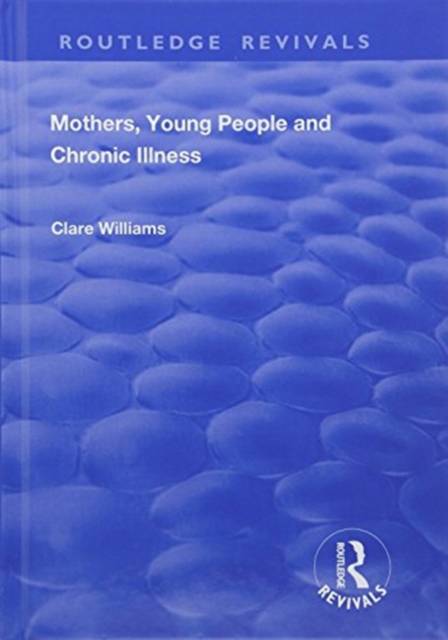
- Retrait gratuit dans votre magasin Club
- 7.000.000 titres dans notre catalogue
- Payer en toute sécurité
- Toujours un magasin près de chez vous
- Retrait gratuit dans votre magasin Club
- 7.000.000 titres dans notre catalogue
- Payer en toute sécurité
- Toujours un magasin près de chez vous
83,95 €
+ 167 points
Description
This title was first published in 2003: Although young people are generally very healthy, it has become clear that many of the health behaviours of young people can have serious consequences later in life. This is particularly so with the management of chronic illness, where poor management can result in serious long-term complications. This book explores how gender differentially affects both the ways in which young people manage chronic illness and the ways in which mothers care for their teenage sons and daughters. Until recently, where gender and health have been linked, the focus has typically been on women rather than men. However, there is growing interest in the health of men, with the recognition that masculinities and health interact in specific, sometimes detrimental ways. Most books examine either women's, or less commonly, men's health, but the comparative approach proposed reflects a growing academic and empirical trend which aims to develop new theoretical perspectives both on gender and on the relationship between gender and health. The book also challenges assumptions that gender is static, by exploring the effects of gender at a specific time of transition in the life course. The focus on adolescence is important, as it is seen by many to be the time when heterosexual values are most powerfully pursued and enforced, thus enabling interactions between gender and health to be thrown into relief. The approach adopted takes issue with many current ideas about young people, which tend to portray them as autonomous individuals, acting independently. For example, in terms of health care for young people with a chronic illness, health professionals generally adopt an individualistic approach, stressing the importance of independence for young people. Rather than seeing young people as purely autonomous, this book relocates them within families, in transition between childhood and adulthood and acting interdependently with other family members. Little is known about the complex deci
Spécifications
Parties prenantes
- Auteur(s) :
- Editeur:
Contenu
- Nombre de pages :
- 138
- Langue:
- Anglais
- Collection :
Caractéristiques
- EAN:
- 9781138737976
- Date de parution :
- 28-06-18
- Format:
- Livre relié
- Format numérique:
- Genaaid
- Dimensions :
- 154 mm x 221 mm
- Poids :
- 452 g







